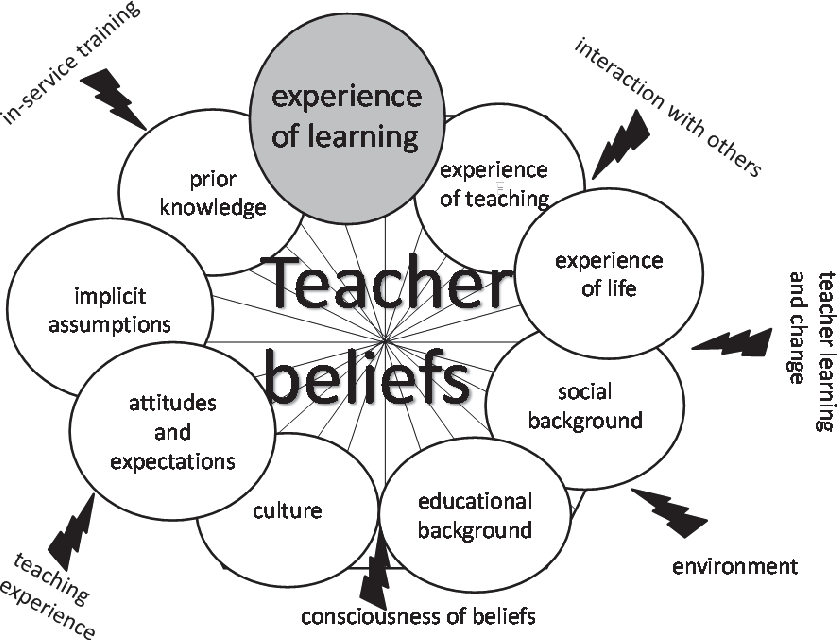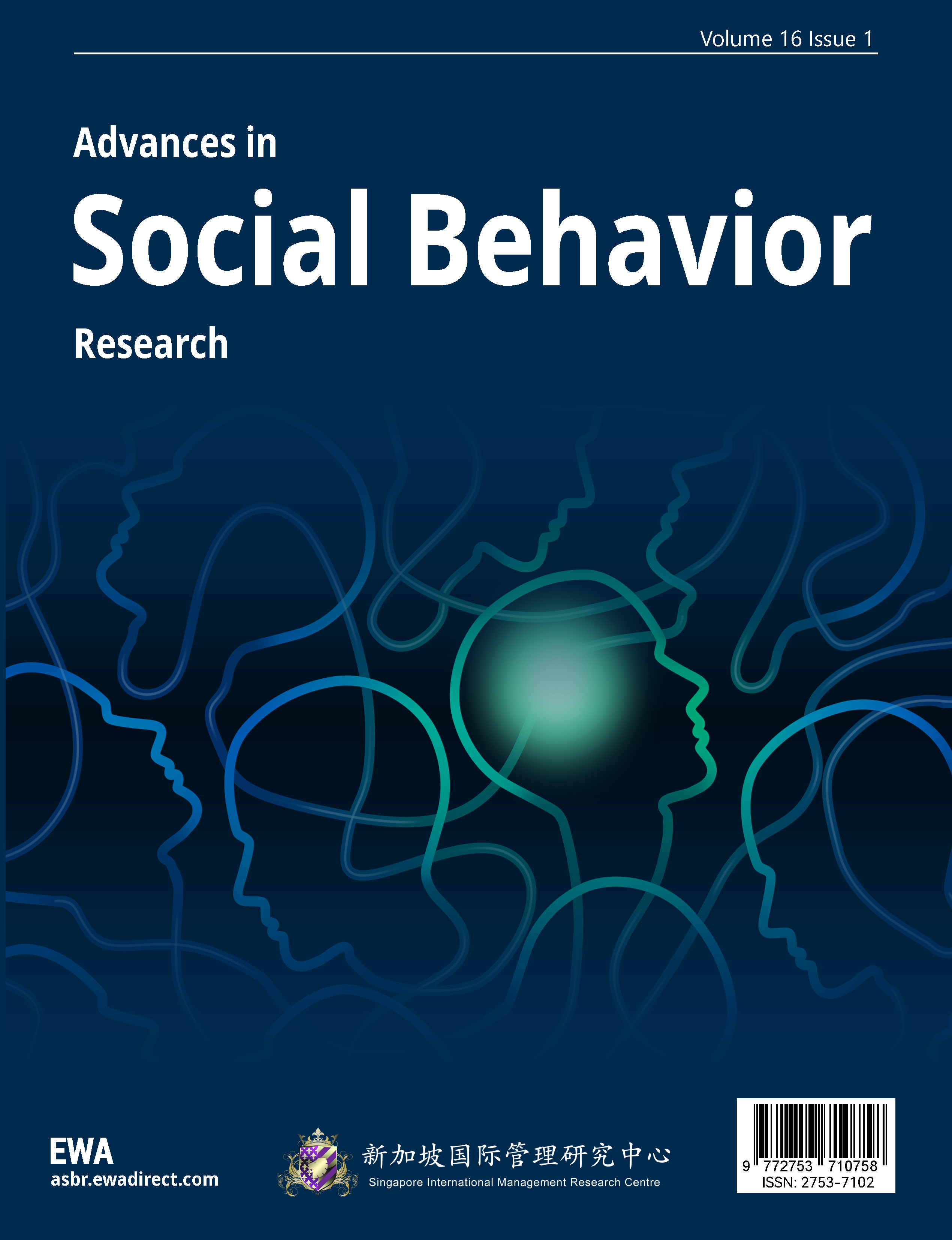1. Introduction
Teacher beliefs significantly influence instructional practices through their impact on second language acquisition methods. Educational psychology serves as the foundation for teacher beliefs which consist of educators’ personal teaching philosophies and learning perceptions that inform their classroom choices. A combination of previous experiences and ongoing professional development along with academic learning shapes teacher beliefs. Teacher beliefs serve as cognitive frameworks that direct every element of teaching practice such as language learning strategies and assessment methods. Within SLA research it has been shown that teacher beliefs play a crucial role in determining the methods educators use for language instruction. Certain educators prioritize Communicative Language Teaching (CLT) which emphasizes interactive learning and student-centered approaches while others focus on grammar-based instruction with structured lessons. Teacher beliefs simultaneously influence classroom culture and their views regarding student language proficiency and growth. Earlier research demonstrated that teacher beliefs about language learning usually shape classroom practices but inconsistencies sometimes arise between teachers' stated beliefs and their actual teaching methods [1]. The space between teacher beliefs and classroom practices reveals the intricate nature of teacher cognition which demands ongoing reflection and adaptive teaching methods. The research uses mixed-methods to discover teaching patterns which are then compared against teachers’ expressed beliefs. The study achieves an extensive comprehension of the link between teacher cognition and classroom practices through the amalgamation of survey data with classroom observations and interviews. Research results provide essential guidance for teacher preparation courses and curriculum developers by emphasizing reflective practice and adaptive teaching methods.
2. Literature review
2.1. Theoretical foundations of teacher beliefs
Teacher beliefs originate from educational psychology principles and embody educators’ personal teaching philosophies alongside their views about effective teaching and learning methods. Prior experiences together with academic knowledge and professional development create fundamental beliefs that teachers use as a cognitive framework guiding their instructional methods. Within second language acquisition contexts teacher beliefs exert an impact on both language learning strategies and assessment methods. Educational instructors utilize cognitive frameworks to make decisions about instructional approaches such as communicative methods, grammar instruction, or task-based learning. The foundational beliefs teachers hold about learning influence their perception of student ability and determine the classroom setting they establish [2]. The diagram in Figure 1 shows the multiple elements that shape how teachers develop their belief systems. Teacher beliefs emerge from an interaction between learning experiences and teaching practice combined with educational history and cultural context alongside prior knowledge which then guides their teaching choices. Personal experiences combined with external elements like social interactions and professional development opportunities form teachers’ belief systems according to the figure. The complex network of influences demonstrates how teacher beliefs evolve and change which shows why teachers need to practice reflection and adapt their methods continuously [3].

Figure 1. Factors influencing teacher beliefs in second language acquisition (source: semanticscholar.com)
2.2. The role of teacher cognition in SLA
Understanding teacher beliefs and classroom practices requires examining teacher cognition. Teachers’ instructional strategies in language learning are determined by their beliefs about key educational concepts like error correction and student interaction. Educational instructors who believe in communicative language teaching tend to promote group discussions and interactive exercises whereas traditional approach-oriented instructors concentrate on grammar drills and direct error correction. The decisions educators make about classroom practice are not arbitrary because they stem from an underlying belief system that directs teaching behavior in an unconscious manner.
2.3. Teaching effectiveness and student outcomes
The success of teaching methods in SLA can be assessed by evaluating student engagement levels, participation rates and academic achievement. Effective teaching transcends knowledge delivery by building an environment that supports student risk-taking and language experimentation free from failure anxiety [4]. Student outcomes are significantly shaped by teachers' language learning beliefs. Educators who hold the belief that language acquisition happens organically through interaction tend to highlight immersive learning while teachers who prefer structured learning methodologies focus on explicit grammar lessons. Recognizing the distinctions between teaching methods helps educators find effective ways to boost student performance.
3. Methodology
3.1. Research design
The research used mixed-methods techniques to thoroughly investigate the connection between teacher beliefs and their classroom practices. Surveys, interviews, and classroom observations served as the primary tools for collecting both qualitative and quantitative research data. Analysis through multiple data sources resulted in a holistic understanding that included both teacher experiences and objective classroom evidence. The surveys examined teachers’ beliefs related to different elements of language learning such as grammar significance, vocabulary importance, and the effectiveness of student-centered teaching approaches [5]. Table 1 summarizes survey responses which reveal teachers' beliefs about language learning with emphasis on preferred instructional methods and error correction views. Through classroom observations researchers gained direct understanding of how teachers' beliefs translated into instructional practices whereas interviews gave teachers the chance to contemplate their teaching philosophies and experiences.
Table 1. Summary of teacher beliefs on instructional approaches (survey results)
Belief Category | Percentage of Teachers Supporting (%) | Example Belief Statements |
Communicative Language Teaching | 68% | "Interaction is essential for language acquisition." |
Grammar-Focused Instruction | 55% | "Explicit grammar teaching is necessary for accuracy." |
Task-Based Learning | 62% | "Practical tasks help students internalize language structures." |
Vocabulary-Centric Approach | 48% | "Building vocabulary is the foundation of communication." |
3.2. Participant selection
The study selected participants using distinct criteria such as their teaching experience level, educational qualifications and language learning environments where they worked. The research included 30 language teachers both new to teaching and those with substantial experience to gather multiple perspectives. The study included teachers from multiple cultural backgrounds and different educational contexts to create a diverse participant profile. Table 2 displays participant demographics and demonstrates how they are distributed according to their teaching experience and educational context [6]. The presence of diversity among participants led to deeper insights into the ways personal and professional experiences shape beliefs.
Table 2. Participant demographics
Teaching Experience | Number of Participants | Teaching Context (Primary/Secondary/Adult Education) |
1–5 years | 10 | 6 Primary, 2 Secondary, 2 Adult Education |
6–10 years | 8 | 3 Primary, 3 Secondary, 2 Adult Education |
11–20 years | 7 | 2 Primary, 5 Secondary |
20+ years | 5 | 1 Primary, 1 Secondary, 3 Adult Education |
3.3. Data collection and analysis
Coding techniques were employed to analyze qualitative data and reveal shared themes and patterns regarding teachers' beliefs and practices. Table 1 demonstrates how survey data established quantitative trends among teachers while classroom observations and interviews enabled exploration of individual teacher experiences [7]. The research team validated classroom observation data by cross-referencing it with interview responses to confirm both consistency and reliability. The use of multiple research methods created a detailed representation of teacher beliefs as they appear in practical teaching settings. Research analysis discovered strong connections between teacher beliefs and instructional methods which demonstrated how these beliefs fundamentally influence classroom activities.
4. Experimental process
4.1. Classroom observation and teaching practices
The teaching approaches observed in classrooms reflected strong alignment with each teacher's personal educational philosophies. Educators who prioritized communicative competence incorporated interactive methods like role-playing and group discussions into their student-centered teaching practices. Educators who maintained traditional teaching views concentrated their methods on direct teaching and repetitive exercises. Different learning environments produced major differences in instructional methods. Some classrooms featured teachers who promoted natural language use while other classrooms had teachers who focused on precise language learning through planned lessons [8]. The variations in teaching methods demonstrate the ways teacher beliefs influence instructional practices.
4.2. Teacher interviews and self-reflection
Through teacher interviews researchers gained valuable understandings about their educational philosophies and cognitive frameworks. The personal language learning backgrounds of teachers showed how they shaped their educational beliefs. Educators who benefited from communicative teaching methods tended to implement the same approaches when they taught. The practice of self-reflection became an essential element for developing teacher beliefs. Teachers updated their educational approaches by reflecting on students' feedback and observing how other teaching strategies worked [9]. The ongoing practice of reflection and adaptation demonstrates how teacher thinking remains fluid and responsive.
5. Results and discussion
5.1. The influence of teacher beliefs on instructional approaches
The analysis showed distinct patterns that demonstrated the impact of teacher beliefs on their selected teaching methods. Instructors who strongly support Communicative Language Teaching (CLT) practices embraced interactive activities to facilitate task-based learning and promote both student-centered learning and active student participation. Traditional belief-oriented teachers gave more importance to grammar lessons and systematic exercises. Table 3 illustrates how often teachers utilize various instructional methods depending on their educational beliefs. Educators who adopt communicative language teaching methods rely more on interactive teaching strategies while those who value accuracy focus their lessons on grammar drills and explicit correction. Teachers expressed explicit beliefs more clearly through surveys and interviews but implicit beliefs appeared through their classroom practices [10]. The complexity of teacher cognition emerged when implicit beliefs clashed with their official teaching philosophies. Teachers who normally preferred communicative teaching methods switched back to teacher-led practices when faced with difficult classroom situations.
Table 3. Frequency of instructional strategies based on teacher beliefs
Instructional Strategy | Percentage of Teachers Using It Regularly (%) | Associated Belief Type |
Task-Based Activities | 70% | Communicative Language Teaching |
Group Discussions and Role-Play | 65% | Communicative Language Teaching |
Grammar-Focused Drills | 60% | Traditional Approach |
Explicit Error Correction | 58% | Traditional Approach |
Vocabulary-Building Exercises | 50% | Mixed Approach |
5.2. Classroom dynamics and student engagement
The effects of different instructional methods on classroom dynamics and student engagement varied significantly. Student-centered teaching approaches created dynamic classrooms where students actively joined discussions and group activities to increase engagement. Students demonstrated increased motivation alongside a greater readiness to experiment with language use in these classrooms. Students who needed straightforward instruction found traditional classrooms useful because of their structured and disciplined environment. Table 4 demonstrates how student engagement levels differed among various instructional styles with interactive methods resulting in better engagement and participation outcomes. Research shows interactive teaching methods drive student engagement but blending structured learning with student-led activities works best to address diverse learning requirements.
Table 4. Student engagement across different instructional styles
Instructional Style | High Engagement (%) | Moderate Engagement (%) | Low Engagement (%) |
Interactive and Student-Centered | 75% | 20% | 5% |
Task-Based Learning | 70% | 25% | 5% |
Grammar-Focused Instruction | 40% | 35% | 25% |
Explicit Correction-Based | 35% | 40% | 25% |
6. Conclusion
The research demonstrates how teacher beliefs significantly affect instructional practices in second language teaching. Educational approaches vary based on belief systems as communicative language teaching emphasizes interactive tasks while traditional methods prioritize grammar drills and structured lessons. Explicit beliefs are usually presented in clear statements while implicit beliefs become apparent through classroom methods which can occasionally oppose declared educational philosophies. According to the study teachers need to practice reflection to assess their teaching methods and make necessary adjustments. Teacher training programs must guide educators to investigate multiple teaching philosophies while offering chances for self-reflection and professional development. Curriculum design needs sufficient flexibility to support different teaching methods while maintaining a language learning approach that integrates both communicative skills and linguistic precision. Subsequent investigations must extend their scope to include multiple cultural and linguistic environments to better understand the development of teacher beliefs and their impact on educational techniques. By developing flexible teaching methods educators will achieve improved classroom effectiveness and student participation which results in enhanced learning achievements in second language education.



